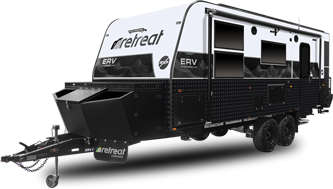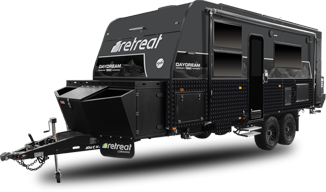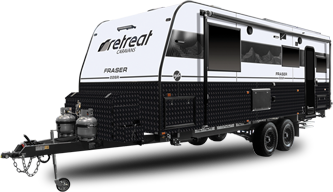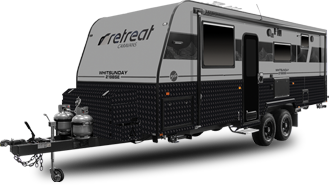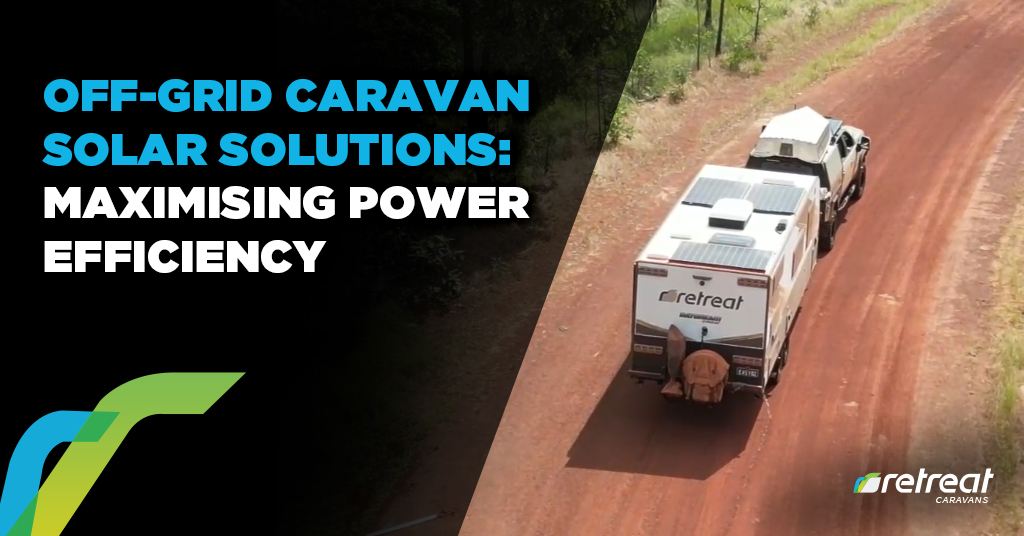
Off-Grid Caravan Solar Solutions: Maximising Power Efficiency
When you’re chasing freedom on the open road, power independence becomes more than a luxury—it’s a necessity. Whether you’re trekking through the red centre or setting up camp in a rainforest, the right solar setup makes all the difference. Off-grid caravans are designed to help you roam further for longer, but the key to unlocking their full potential lies in how you manage and maximise solar energy. In this guide, we’ll break down how to do just that.
Understanding Caravan Solar Systems
A caravan solar setup typically includes four components: panels, a charge controller, batteries, and an inverter. The panels harness sunlight, the controller regulates the charge, the batteries store energy, and the inverter converts it to usable power. Balancing generation with storage and usage is essential—too small a system and you’ll struggle to stay powered, too large and you’re overinvesting in unused capacity.
For travellers setting up for remote stays, understanding the ins and outs of off-grid solar solutions for caravans can help you avoid common performance gaps.
Choosing the Right Solar Panels
Panel selection hinges on three factors: efficiency, space, and portability. Monocrystalline panels offer the best efficiency in a compact footprint, while polycrystalline panels provide a more affordable alternative with a slight drop in output. Portable panels can supplement roof-mounted ones, giving you more freedom to position them in full sun.
A solid mix of fixed and portable panels can balance energy needs while giving you flexibility in shaded campsites or variable weather.
Battery Storage That Matches Your Needs
Without the right storage, all that solar input goes to waste. Lithium iron phosphate batteries have become the preferred option for off-grid caravanning, thanks to their deep discharge capability, lighter weight, and faster charge cycles. Compared to traditional AGM batteries, lithium options offer significantly more usable energy.
Understanding how storage works within broader power options for off-grid travellers helps ensure your battery bank can handle both everyday use and extended remote stays.
Getting the Mounting Angle Right
Positioning your panels correctly can have a surprisingly large impact. Fixed flat panels are easy to install but may miss optimal angles for sun exposure. Panels mounted at a 30-degree tilt tend to perform best across most of Australia, but seasonal adjustments can make a big difference, especially in winter or in southern regions.
If you frequently travel or stay put for days at a time, incorporating tilt brackets or adding portable panels offers more consistent output across varying light conditions.
Optimising Your Inverter Setup
An inverter’s job is to convert the battery’s DC power into AC, making it usable for everyday appliances. The right type depends on what you’re running—modified sine wave inverters handle basic loads, while pure sine wave inverters are ideal for sensitive electronics and more demanding appliances like microwaves or induction cooktops.
Matching the inverter’s output to your combined appliance draw is vital. If your air fryer and laptop charger are running at the same time, you’ll want to ensure your inverter can handle the load without risk of shutdown.
Managing Energy Consumption Wisely
Efficiency isn’t only about generation—it’s also about usage. Small shifts like replacing halogen lights with LEDs, using a 12V fridge, and unplugging idle devices can dramatically extend your battery life. Consider insulating your van better to reduce the need for cooling or heating.
If you’re working through the logistics of what gear to bring or how to prepare, the ultimate checklist for solar-powered adventures is a good reference point for building a balanced and efficient loadout.
Monitoring and Maintenance
Regular upkeep ensures your setup keeps running at peak performance. Dirty solar panels can reduce efficiency by up to 25%, and loose cables or corroded connectors can lead to energy losses or even safety risks. Cleaning your panels monthly, checking connections, and inspecting brackets and fuses every few weeks goes a long way.
Adding a monitoring system gives you real-time insight into how your system is performing. Look for charge controller readouts or Bluetooth-enabled battery monitors that can alert you to changes in voltage, performance dips, or irregular energy draw.
Redundancy and Backup Planning
No matter how well-built your system is, things go wrong. Whether it’s a run of cloudy days or an unplanned spike in energy use, having a backup option provides insurance. A compact generator or a secondary charging method like vehicle alternator input can give you an extra layer of resilience.
Planning for redundancy isn’t just about extra gear—it’s about designing your entire system with fallback logic in mind, so you’re not caught off guard when conditions change.
Frequently Asked Questions
1) How much solar power do I need for my off-grid caravan?
The right amount of solar power depends on your appliances, travel habits, and the number of people in your van. For basic needs—charging phones, lights, and a 12V fridge—around 200 to 300 watts of solar paired with a 100Ah lithium battery may be enough. However, adding in a laptop, coffee machine, or fan pushes your requirements up quickly. Moderate users benefit from 400 to 600 watts of solar and a 200Ah battery. Families or long-term travellers who use air conditioning or multiple appliances should aim for 800+ watts and 300Ah or more in battery storage.
Before you buy, calculate your total daily watt-hour usage, then multiply it by 1.2 to 1.5 as a buffer for cloudy days or unexpected use. And remember—generation is only part of the puzzle. You need storage and inverter capacity to match.
2) What’s the best battery type for off-grid solar storage?
Lithium batteries, especially lithium iron phosphate (LiFePO4), are the top choice for serious off-grid setups. They’re lightweight, safe, and can be deeply discharged without long-term damage. Compared to AGM batteries, lithium offers more usable capacity, a faster charge rate, and a much longer cycle life—often over 2000 cycles before degrading. That means they last up to five times longer in real-world use.
AGM batteries still have a role in lower-cost or short-trip setups. They’re more affordable initially and don’t require a battery management system. But they’re heavier, degrade faster, and need more frequent maintenance. If you’re on the road often or plan to go remote for long stretches, lithium is the clear winner.
3) Can I run air con off my solar system?
Yes, but not without a serious system upgrade. Air conditioners draw a lot of power—sometimes up to 2000 watts when starting. To run one off-grid, you’ll need a large battery bank (300Ah or more), a high-quality pure sine wave inverter (at least 2000W continuous), and a solar array of 600–1000W to keep up. Even then, you’re unlikely to run it all day. Most travellers use air con sparingly off-grid or only when connected to mains power.
More efficient alternatives include rooftop vents, 12V fans, or portable evaporative coolers. These draw significantly less power and can help keep things comfortable without draining your batteries.
4) Are portable solar panels worth adding to a fixed setup?
Absolutely. Fixed panels are limited by roof space and angle. Portable panels allow you to reposition for maximum sun exposure, which is a game-changer when your caravan is parked in shade or the sun angle changes. They’re particularly useful for longer stays or in winter months when sunlight hours are reduced.
Most portable panels come with connectors that plug directly into your charge controller or battery system. They add flexibility and extra power without needing permanent installation. Just make sure your charge controller is sized correctly to handle the added input.
5) How often should I maintain my solar system?
A quick check every two to four weeks is ideal. Clean your panels using water and a soft cloth—no abrasive cleaners. Visually inspect wiring for damage or corrosion and check all bolts and mounts are tight. Every few months, run a system check with your battery monitor or controller to track voltage and input levels. If you notice performance drops, check for dirt buildup or aging batteries.
Preventive maintenance keeps things running smoothly and avoids surprises when you’re miles from the nearest mechanic or power outlet.
Ready to power up your adventure?
If you’re looking to level up your off-grid setup and explore Australia’s remote beauty without compromise, check out Retreat Caravans. We’re building caravans tough enough to take you anywhere—and keep you there. See below for our full range of caravans, all carefully designed with you in mind:



